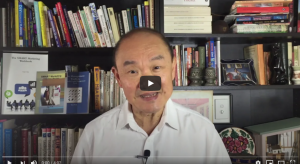Don’t Forget To Plan For Contingencies
If one thing 2020 has taught us, it’s that you can’t predict the unpredictable!
Now, don’t get me wrong, I’m all about planning.
That’s why I preach about how small businesses need to prepare business plans. I write about marketing plans. If your small business was beginning to grow I’d be talking to you about strategic plans and risk management plans!
No, what I’m saying is that you must continue your planning habit and prepare your plans for your business so that you can look ahead, understand what might happen, and decide what you will do to take advantage of opportunities while mitigating the threats.
However, while you are doing this, your process needs to also understand that your plans must include contingencies.
This means identifying different, possible contingencies or scenarios.
You can certainly identify multiple scenarios and then plan for each eventuality, but I think that’s taking the attempt to recognise uncertainty a little too far!
The most practical way of planning for contingencies is to identify the most likely scenario (given what you know right now), identify a likely worst-case scenario, and identify a likely best-case scenario.
Take the process of business planning.
I usually recommend that you take these steps:
- Define your vision – where you want your business to go at the end of the planning timeframe
- Understand where you are now; your strengths, weaknesses, opportunities and threats
- Identify the gaps between your current situation and where you want to go
- Strategise ways to bridge the gap.
At times of high uncertainty, you would add a step between step 3 and step 4: identify the most likely, best-case and worst-case scenarios.
Then, your strategies can be a set of strategies that you intend to follow, as well as two other sets of strategies that you would follow if the worst-case, or the best-case transpires.
Let’s follow this through an example.
I have a client in my consulting business who is an electrical contractor.
He has always been a growth-minded business person.
Starting small with his retired Dad looking after the home-office and one other electrician, he always had a vision of his ultimate business, and over the years I have seen him grow from largely domestic work to working for real estate agents and builders and from just 2 electricians to 4.
Here in Australia, the Coronavirus first affected his business because of the lockdowns. He couldn’t go to people’s homes for a period of time. In comparison to the rest of the world, this didn’t last very long, but once the lockdown was lifted, he found that business activity remained quiet because his main customers – home builders – were, in turn, quiet with their customers unsure of committing to new builds, extensions or renovations. People just were not confident enough in the economy and their jobs to commit to spending.
As a result, he had to let some of his electricians go because there just wasn’t enough business.
But after nearly a year, business activity is starting to pick up. Not quite to “before” levels, but definitely on the up.
However, we have had recent hiccups to opening up with some states still reporting the odd case and scare. It feels like at any time, we could have another “wave”.
It was in this context that he prepared his business plan for 2021 – amidst a little uncertainty.
He defined his vision.
In his case, he has always been quite clear what he wanted his business to look like in 10 years’ time and each annual business plan was a step toward that ultimate picture.
In describing his vision he was able to define some key measurements of success being:
- A profitable, but relaxed business, with regular and loyal customers, turning over about a million dollars a year;
- Maintaining a small team of long-term employed electricians, who could be trained to become independent and work independently at different jobs as scheduled by his Dad, without him having much need to supervise;
- Using a critical time-management software that all his staff could access on their phones, that maintained their efficiency at booking and completing jobs.
This meant that each year he had to:
- Maintain strong relationships with customers, measuring that by their average annual spend and the length of time they have been customers
- Continually increase sales while maintaining a defined profit-margin goal
- Employing eventually a team of 8 electricians each working on an average of $100,000 to $150,000 in projects a year, comprised of a mix of ticketed and apprenticed electricians to allow for growth
- Maintaining rewards for his staff apart from market-rate salary so that they remain at the company
- Training everyone on the job-booking software and on maintaining good personal time-management and customer-service.
These are very detailed long-term goals which he was able to define because he analysed what his vision would really look like in “real life”.
When he analysed his current position, he found that he did have loyal customers and staff, that his job-booking software worked well, and that his “stay small and personal” approach was liked by his market. In terms of weaknesses, he did not have enough spare capital so he had to grow slowly and having let go of some of his electricians, the competition to find good electricians to employ in future was tough.
So in identifying the gaps, the most critical were lack of staff to provide the ongoing building of sales from year to year which meant that it was difficult to build a large and loyal customer base.
It was clear that in order to bridge those gaps, he had to look at funding his working capital, finding the right workers, and building his customer and sales base.
However, before he actually started writing his strategies to bridge the gaps this year, he started to identify his likely, best-case, and worst-case scenarios.
He thought that the most likely scenario would be that Australia would continue to open up and, eventually when the vaccine became widely available, that business confidence would return. However, he also felt that with the current international economy, and how Australia depended on foreign trade to generate its domestic economy, his little business would still see the effects of a more depressed business climate in 2021.
In looking at the most likely best-case scenario, he thought that with the vaccine would come international economic recovery, leading to stronger local recovery. This would mean that people would return to the previous levels of house maintenance, renovation, extension and building. To him, this would result in “business as usual before the Coronavirus” within 2021.
However, he also looked at the most likely worst-case scenario.
In this, he thought that the worst case would be a combination of another outbreak, ineffective vaccination, and international borders and trade remaining stifled.
If this happened, the business would stutter – sometimes on and sometimes off – and he could not expand again as he hoped. This situation would certainly last over the whole of 2021.
Having identified his three scenarios he constructed his strategies.
First, he decided that he needed to improve working capital initially, and then depending on which scenario played out, he would borrow to fund the expansion of the business. So, his strategy was to use some of his personal savings into the business as proprietor’s loans at a low-interest rate comparable to what he was getting from the bank in his savings account. However, he was prepared to take out a mortgage on his house later in the year – depending on how the economy and business went.
If the most likely scenario took place, this strategy was well-placed and he would take out a mortgage toward the end of 2021.
However, if the best-case scenario took place, he was already prepared to take out the mortgage sooner and borrow a higher amount to repay his proprietor’s loan.
On the other hand, if the worst-case scenario happened, he would simply contract operations and not take out a loan, possibly reducing whatever expenses he could to match dwindling sales. In this case, he was prepared to leave his proprietor’s loan in the business, for the whole year at least.
Second, he decided that he should restructure his staff so that some of the new ones he sought could join as part-time or self-employed sub-contractors. This would reduce staff costs and allow their continued employment to be flexible. They would still receive the training critical to turning them into independent workers and be rewarded to retain loyalty. In this way, he could actually find more electricians now and compete in the labour market for them.
If the most likely scenario took place, he would convert them to full-time employees as the work and sales improved.
However, if the worst-case scenario took place, he could let them go more flexibly. If the best-case scenario happened, he would convert them into full-time employees more quickly than expected.
His third strategy was to prepare an understated but steady marketing campaign, aimed first at his existing customers. His objective was to rekindle relationships and build work.
To do this, he aimed first at the real estate agents on his customer list. They always needed work done because their owner clients would still need maintenance on the properties they rented out. Once he felt that he had obtained work from 75% of his previous real estate agent customers, which he felt he could do by the first quarter in the most likely scenario, he would continue working on them but also start to market to builders. He felt that by the second quarter, in the most likely scenario, builders would be gearing up their work as well.
In the meantime, as there was no more lockdown, he would send greeting cards to his domestic customers, just to remind them of his presence. They would always be a small, bread-and-butter section of sales.
He felt that in the worst-case scenario he could wind all of his marketing plans back to just “keeping in touch”, while in a best-case scenario he would speed up the schedule of how he contacted and marketed to the different customer segments.
As you can see, this was a well thought out, flexible set of strategies that:
- still recognised his future goals despite the uncertainty
- recognised his current situation
- used multiple strategies for different contingencies
- allowed flexibility while still progressing to his ultimate goals.
In this way, he was able to build in contingency planning in his 2021 business plan.
You too can use this methodology. It’s a tweak on the usual business planning process I recommend:
- Prepare for your planning – gather information about your industry and your national or local economy
- Clearly define your long-term vision – make sure you can describe it so well that it forms the basis of identifying your success factors
- Understand exactly where you are now
- Identify the gaps between where you are now in capability and performance, and where you want to be in the future
- Set some short-term goals over the next year that will be a step toward the long-term vision
- Identify your most likely scenario, your best-case scenario, and your worst-case scenario
- Create strategies based on your most likely scenario, but build in variations based on best-case and worst-case, so that you are prepared.
- Implement them and watch, monitor, evaluate and react quickly to make any necessary changes.
If you would like to know more about the process of business planning, you can enrol in our free four-part business planning online training.
You can sign up here cost-free and obligation-free.
Don’t forget, if you haven’t already, you can subscribe to get these free tips, tools and resources to grow your business sent directly to you by email (and you can unsubscribe at any time). Just go to sign up here.
See you next time!







No comments yet.
Add your comment